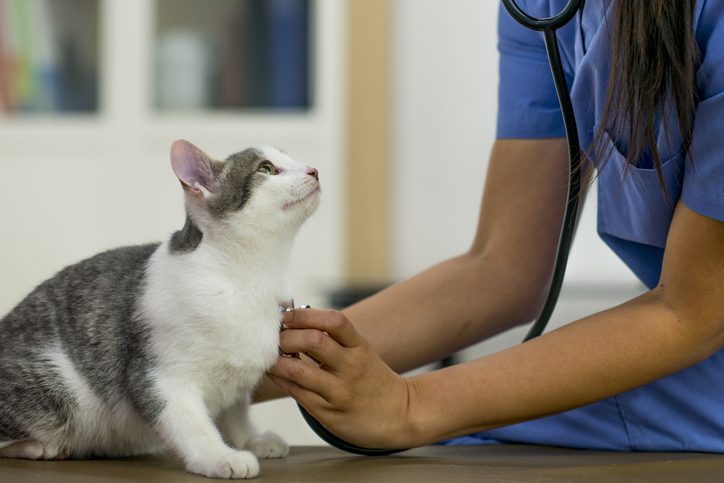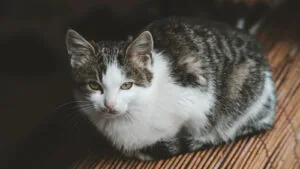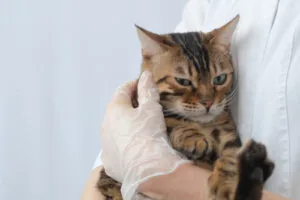Heartworm in Cats: Symptoms, Treatment, and Prevention

Heartworm in cats is a serious, potentially fatal condition caused by parasitic worms. It can be hard to spot the symptoms, so it’s important to be aware of the signs that may indicate heartworm in your cat. Knowing the treatments and preventative measures you can take can help keep your cat safe and healthy. Read on to learn more about the symptoms, treatments, and preventative measures for heartworm in cats.
Symptoms of heartworm infection in cats can include coughing, exercise intolerance, and weight loss. Treatment options vary depending on the severity of the infection, but typically include the administration of anti-parasitic medication. To prevent heartworm infection in cats, be sure to give them monthly preventative medication.
Keep Your Cat Safe: The Risks of Heartworm Disease
Heartworm disease is a common and potentially life-threatening ailment that cats can contract. There are several symptoms to watch for, and if you think your cat may be suffering from heartworm disease, it is important to take them to the vet for treatment.
Prevention is the best way to keep your cat safe from heartworm disease, so be sure to regularly check their surroundings for the presence of fleas, ticks, and mosquitoes, and keep them medicated with preventive medication.
Some of the risks of heartworm disease for your cat include:
- Permanent damage to the heart, lungs, and other organs of your cat.
- Severe cases of heartworm disease in cats can lead to heart failure or even death.
- Infected cats can suffer from coughing, difficulty breathing, and fatigue.
- Heartworm disease can cause severe anemia and damage to the liver and kidneys.
- Infected cats may also experience sudden weight loss, vomiting, and diarrhea.
- Untreated heartworm disease can lead to severe inflammation in the lungs, which can be fatal.
- Heartworm disease can also lead to blockages in the blood vessels, which can cause permanent damage to the organs.

Where Does Heartworm Come From?
Heartworms in cats are spread when an infected mosquito bites a cat, transferring the larvae of the parasite into the bloodstream. The adult heartworm can grow to be up to 12 inches long and live in the heart, lungs, and blood vessels of an infected cat. Heartworm disease can cause inflammation in the lungs, heart failure, and other serious complications.
In severe cases, heartworm disease can be fatal. Treatment of heartworm disease in cats is costly and time-consuming, so it’s important to take preventive steps to protect your cat. This includes keeping them indoors, using a monthly heartworm preventative, and consulting with your veterinarian to ensure your cat is properly protected.
Warning Signs: How to Identify Heartworm in Your Cat
Cats who are infected may exhibit a number of warning signs, and it’s essential to treat them as soon as possible in order to prevent heartworm disease from progressing.
Here are some of the warning signs to watch for:
- Your cat is not eating or appears to be losing weight rapidly
- Your cat has trouble breathing or is struggling to breathe
- Your cat has an increased appetite and is binge eating
- Your cat has persistent watery diarrhea or blood in their stool
If you think your cat might have heartworm, it is best to take them to the vet for a check.
Diagnosing Heartworm in Cats
A veterinarian will diagnose heartworm in a cat by performing a physical exam, which may include listening to the cat’s heart and lungs, as well as palpating the abdomen to feel for any enlarged organs. The vet may also take a blood sample and examine it under a microscope to look for microfilariae, which are tiny worms that indicate an infection.
X-rays and ultrasounds may also be used to look for any signs of infection in the heart and lungs. Treatment may involve medications and lifestyle modifications, such as reducing the cat’s exposure to mosquitoes, to help reduce the risk of further infestations.

Treatment Solutions for Cats
Heartworm treatment solutions for cats vary depending on the severity of the infection. In mild cases, a vet may prescribe a monthly preventative medication. This will help to reduce the risk of a heartworm infestation. For cats with more serious infestations, a combination of oral and injectable medications may be necessary, but are not always the most effective. In extreme cases, surgery may be required to remove the worms. A veterinary specialist should always be consulted when considering heartworm treatments for cats. It is important to follow the vet’s advice to ensure the best outcome for your pet.
Protecting Your Cat from Heartworm Disease
Heartworm disease is a serious and potentially fatal condition that can affect cats, so it is important to take preventative measures. The best way to prevent heartworm disease in cats is to use a monthly heartworm-preventative medication prescribed by your vet. Other preventive measures include keeping cats indoors, regularly cleaning up standing water around your home, and keeping your cat up to date on their vaccinations. Additionally, it is important to stay on top of monthly heartworm tests to ensure your cat is free of the disease.
Conclusion
It is important to be aware of the risk of heartworm infection in cats and to take steps to prevent it. Talk to your veterinarian about heartworm prevention for your cat, including testing for heartworm and using preventive medications. Early detection and treatment of heartworm infection in cats is key to preventing long-term health complications, including death. With proper prevention, cats can be protected from the devastating effects of heartworm disease.
Please give us a call at (219) 865-3737 for any questions regarding your pet’s health. We are more than happy to help with whatever you may need here at Dyer Animal Clinic!
Share This Post
Recent Posts
About Dyer Animal Clinic
We are a place where pets and their people can feel at home. It's a place where wellness is maintained and supported from the time they’re newborns through their golden years.






